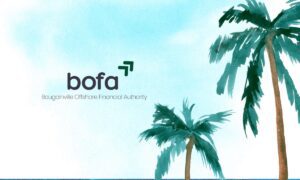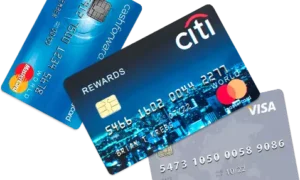Hello there, I’m Tom. In my years as a business consultant, I’ve seen a painful, recurring story. I’ll sit down with a passionate, brilliant small business owner. They show me their profit and loss statement, and it’s beautiful, deep in the black. They are, by all accounts, “profitable.” Yet, they look exhausted, stressed, and confess they are struggling to make payroll next week.
How is this possible?
The answer, almost every single time, is cash flow.
Let me be clear: profit is an accounting theory, but cash is a reality. You don’t pay your rent, your employees, or your suppliers with “profit.” You pay them with cold, hard cash. Cash flow is the real-time movement of money into and out of your business. It is the single most important factor in small business survival. A profitable business can go bankrupt waiting to get paid, while a temporarily unprofitable one can survive if it has a strong cash position.
Managing this flow isn’t just a “nice to have” skill for the finance department. For a small business owner, it’s your primary job. The good news is that you can get control of it. It takes discipline and the right habits. I’m here to share my top 10 practical, battle-tested tips to help you master your cash flow and finally get some sleep.
1. Embrace the Crystal Ball: Forecast Your Cash Flow
If you don’t know where you’re going, any road will get you there, and in business, that road often leads off a cliff. A cash flow forecast is your financial weather report. It’s a projection of the actual cash you expect to come in and go out of your business over a set period.
I’m not talking about a complex, 50-tab spreadsheet. Start simple. Look at your last three to six months of bank statements. Average out your regular income and your fixed costs (rent, payroll, software). Then, map out your expected sales and non-regular expenses (like a tax payment or new equipment) for the next three, six, or even 12 months.
This forecast is your early warning system. It will show you potential cash-short months before they happen, giving you time to react. You might decide to chase down late invoices, hold off on a purchase, or ramp up a sales promotion. Running a business without a forecast is flying blind.
2. Become a Cash Flow Watcher: Monitor It Relentlessly
A forecast is a plan, but it’s useless if you stick it in a drawer. You must compare your plan to reality, and you must do it often. Many business owners I meet only look at their finances once a month when their bookkeeper sends a report. By then, it’s too late. A monthly report is an autopsy, it tells you what killed you.
You need a weekly check-up.
I tell all my clients to schedule a 30-minute “Money Date” with their business every Friday morning. During this time, you do two things:
- Look at your current cash balance.
- Compare your income and expenses for the past week against what you forecasted.
Are you on track? Are sales lower than expected? Did an unexpected bill pop up? This constant, real-time monitoring allows you to make small adjustments every week instead of facing a massive crisis every quarter.
3. Get Your Money Faster: Optimize Accounts Receivable (A/R)
For many service-based businesses, this is the biggest cash flow killer. You do the work, you send an invoice, and then… you wait. And wait. You have effectively become an interest-free bank for your clients. We have to stop this.
Your goal is to shrink the time between doing the work and having the cash in your bank account. Every single day counts. Here are a few strategies I’ve seen work wonders.
| Strategy | Why It Works | My Pro-Tip |
| Invoice Immediately | The work is fresh in the client’s mind, and it starts the payment clock sooner. | Don’t wait until the end of the month. Use accounting software to send the invoice from your phone before you even leave the client’s site. |
| Offer Online Payments | Convenience is king. Fewer barriers (like finding a checkbook and a stamp) mean faster payment. | Yes, there’s a small processing fee (2-3%). Pay it. The cost of not having that cash for 30 days is almost always higher. |
| Automate Reminders | This takes the emotion and “nagging” feeling out of collections. It’s just a polite, professional, automated nudge. | Set your software to send reminders 3 days before the due date, on the due date, and 5 days after it’s past-due. |
| Shorten Your Terms | Who said “Net 30” is a law? | On your next new contract, try “Net 15” or even “Due on Receipt.” You might be surprised how many clients just… pay. |
4. Be Strategic With Your Bills: Manage Accounts Payable (A/P)
This is the other side of the coin. Just as you want to get paid immediately, you want to hold onto your cash as long as ethically and professionally possible.
Let me be clear, I am not telling you to pay your bills late. That will destroy your relationships with suppliers and your business credit. I am talking about paying your bills on time, but not early.
If a vendor gives you Net 30 terms, don’t pay that bill the day it arrives. Schedule the payment to go out on day 29. That extra cash stays in your account, earning interest (however small) and acting as a buffer.
Always be on the lookout for early-payment discounts. If a supplier offers you a “2/10, Net 30” (a 2% discount if you pay in 10 days, otherwise the full amount is due in 30), do the math. A 2% discount for paying 20 days early is an annualized return of 36%. That’s a fantastic deal. But if there’s no discount, hold your cash until the due date.
5. Build Your Business Raincoat: The Cash Reserve
I call this the “catastrophe fund,” the “rainy-day fund,” or the “sleep-at-night fund.” Whatever you call it, you need one. This is a non-negotiable.
Your cash reserve is a separate savings account (ideally a high-yield one) with three to six months’ worth of your essential operating expenses. This includes rent, payroll, utilities, and other “must-pay” bills.
This fund is your buffer against the unexpected.
- Your biggest client suddenly goes bankrupt.
- A pandemic shuts down your industry.
- A critical piece of equipment fails.
Without a cash reserve, these events are business-ending catastrophes. With a cash reserve, they are just expensive, stressful inconveniences that you can navigate.
6. Stop Stockpiling: Master Your Inventory
If you run a product-based business, your inventory is not just “stuff on a shelf.” It is cash, sitting on a shelf, pretending to be a box. Every dollar you have tied up in inventory you haven’t sold is a dollar you can’t use for payroll, marketing, or rent.
I’ve seen so many businesses fail because they got a “great deal” on a massive bulk order, only to have that product sit for a year. You need to become ruthless about inventory management.
- Identify your “A” products (the 20% of items that drive 80% of your sales) and keep them well-stocked.
- Identify your “D” products (the ones that haven’t sold in 6+ months) and liquidate them. Have a sale. Bundle them. Get some of your cash back.
- Use inventory management software to track turnover and avoid over-ordering.
7. Plug the Leaks: Conduct a ‘Spend Audit’
It’s often not the big, obvious expenses that drain your cash. It’s the “death by a thousand cuts,” the small, recurring, and often-forgotten expenses. I recommend doing a deep-dive “spend audit” at least twice a year. Print out your last three months of bank and credit card statements and go through them line by line.
You will be shocked at what you find.
- Subscriptions: Review every single software tool. Are you still using that $50/month project management app? Can you downgrade a tier on another service?
- Bank Fees: Are you paying account fees you could get waived? Are you paying for “perks” you never use?
- Utilities: When was the last time you shopped around for a better phone or internet plan?
- Supplies: Are you auto-ordering supplies you don’t really need?
- “Miscellaneous”: This category is a black hole for cash. Give every dollar a job.
This isn’t about being cheap, it’s about being intentional. Every dollar you save here goes directly into your cash reserve or back into a part of the business that generates growth.
8. Let the Robots Help: Leverage Technology
In 2025, you have zero excuses for managing your finances in a physical shoebox or a clunky, old spreadsheet. Modern, cloud-based accounting software (like QuickBooks, Xero, Wave, or FreshBooks) is inexpensive, intuitive, and absolutely essential.
This software is your cash flow co-pilot. It connects directly to your bank accounts, giving you a real-time dashboard of your financial health. It automates invoicing, expense tracking, and bill payments. It generates the cash flow forecasts and reports I mentioned earlier in just a few clicks.
Stop wasting your precious time on manual data entry. Your time is better spent analyzing the data, not just collecting it.
9. Secure a Safety Net (Before You Need It)
This is different from your cash reserve (Tip #5). A cash reserve is your own money. A line of credit is the bank’s money that they agree to let you use (up to a certain limit) whenever you need it.
Here is the most important rule about a line of credit: The best time to apply for one is when you don’t need it.
Banks are eager to lend money to healthy, cash-positive businesses. They are extremely hesitant to lend to businesses that look desperate. Go to your bank now, while your books are strong, and secure a business line of credit.
Think of it as a financial fire extinguisher. You hope you never have to use it. But if a cash flow emergency strikes, you’ll be profoundly grateful it’s on the wall. Using a line of credit to cover a temporary payroll gap while you wait on a big client to pay is a smart, strategic business move. It’s a calculated risk. It’s entirely different from just rolling the dice and hoping for the best, like you might on some sites you find here. This is about strategy, not luck.
10. Draw a Hard Line: Separate Business and Personal Finances
This is my final tip, and it might be the most fundamental. If you are still running your business out of your personal checking account, stop. Today.
When you co-mingle funds, you have no idea about the true financial health of your business. You are getting a false positive (or false negative) on your cash position. It makes bookkeeping a nightmare, it makes you a massive target for an IRS audit, and it is a sign of an amateur operation.
Go to your bank. Open a dedicated business checking account and get a business credit card.
- All business income goes into the business account.
- All business expenses are paid from the business account.
- You pay yourself a regular, consistent “salary” (an owner’s draw) from the business account to your personal account.
This separation brings clarity. It professionalizes your operation and is the first, most critical step to managing your cash flow.
Your Business Lives and Breathes on Cash
Mastering your cash flow isn’t a one-time event. It’s a system. It’s a collection of small, consistent, disciplined habits.
From forecasting your future to monitoring your present, from accelerating your income to strategically slowing your expenses, these 10 tips are your new playbook. They will move you from a reactive position (panicking about payroll) to a proactive one (making smart, strategic decisions for growth).
Don’t get overwhelmed. You don’t have to do all 10 things tomorrow.



































